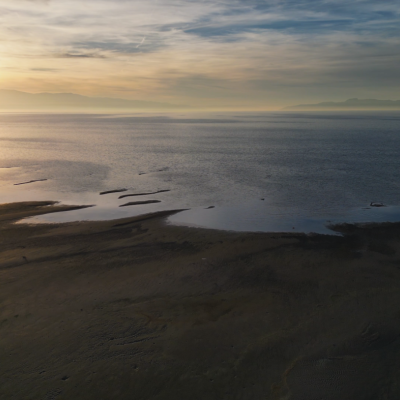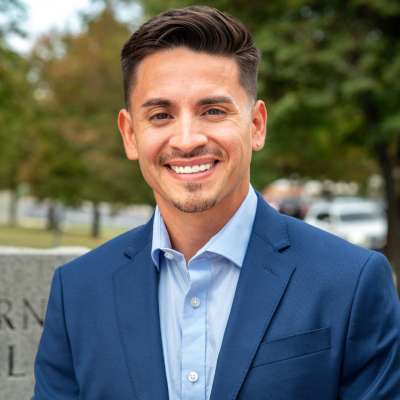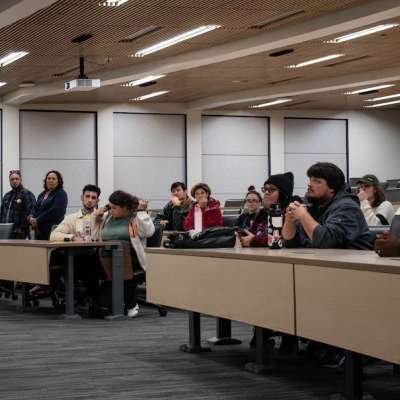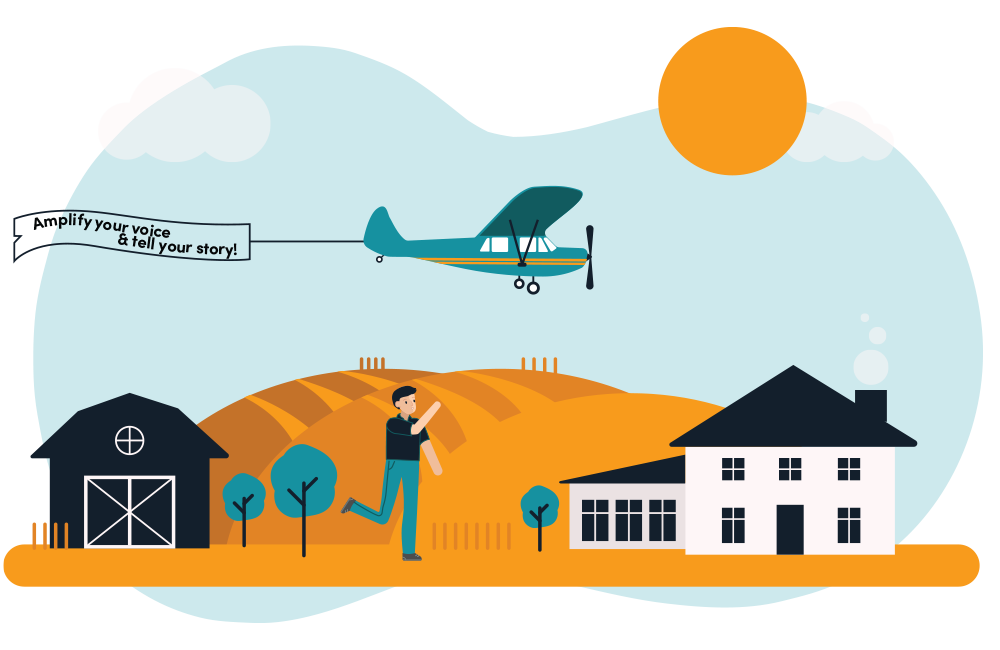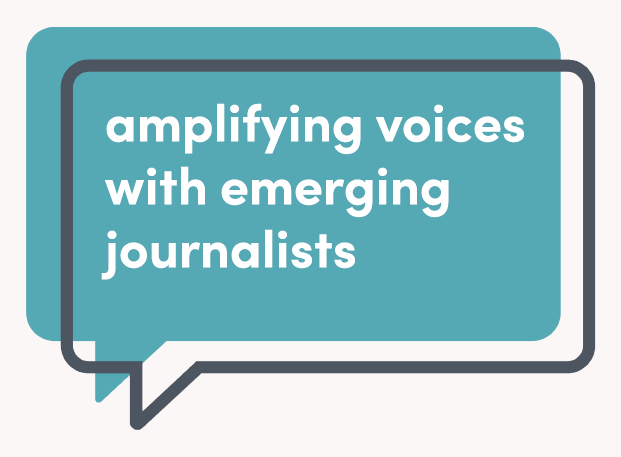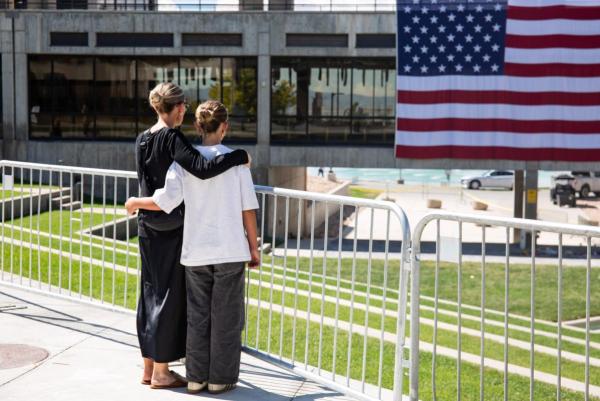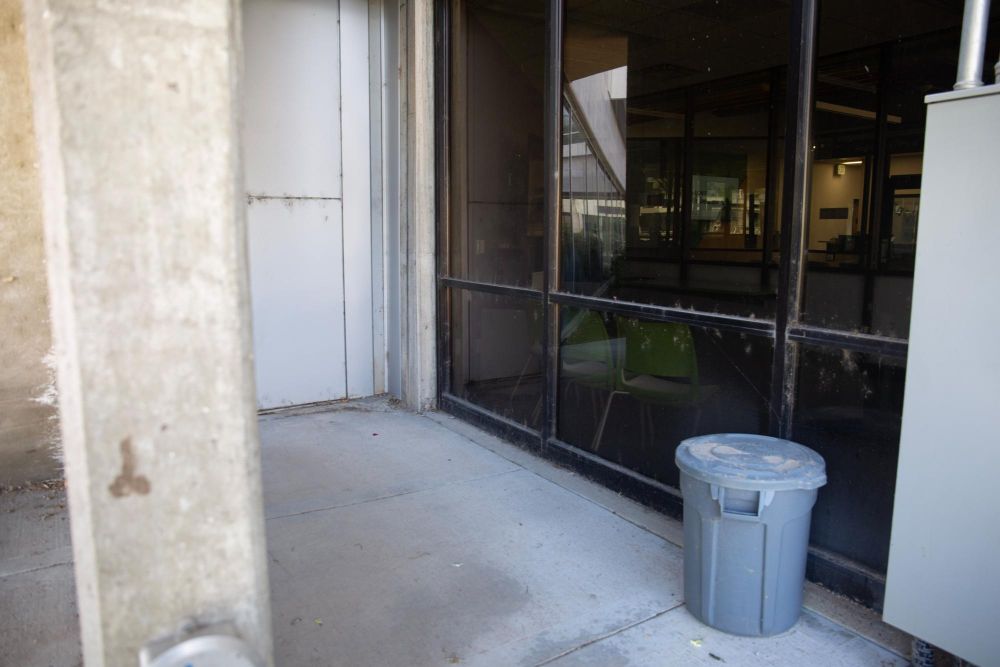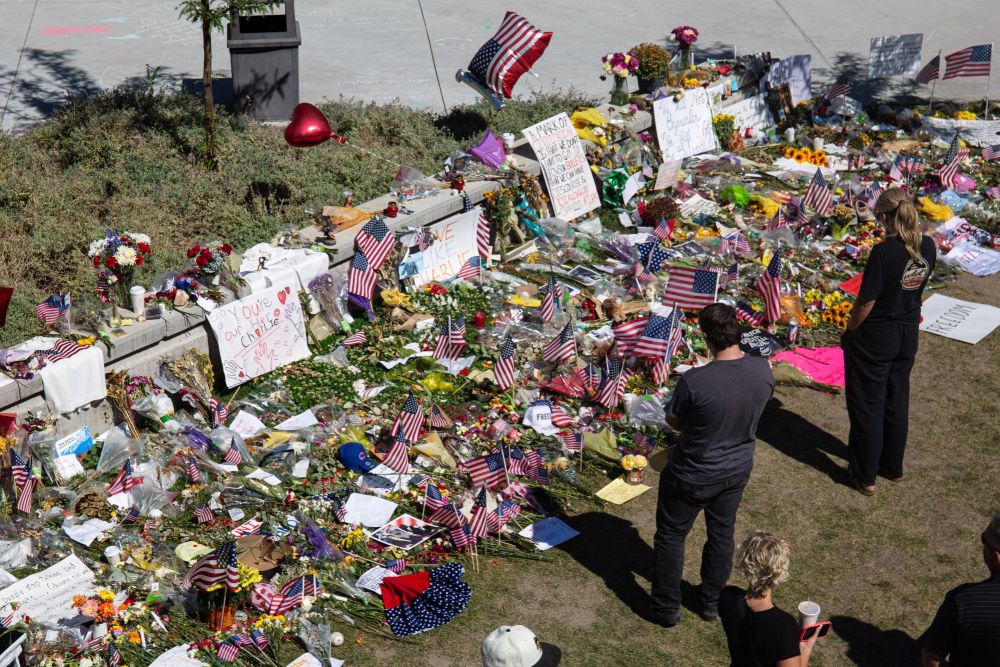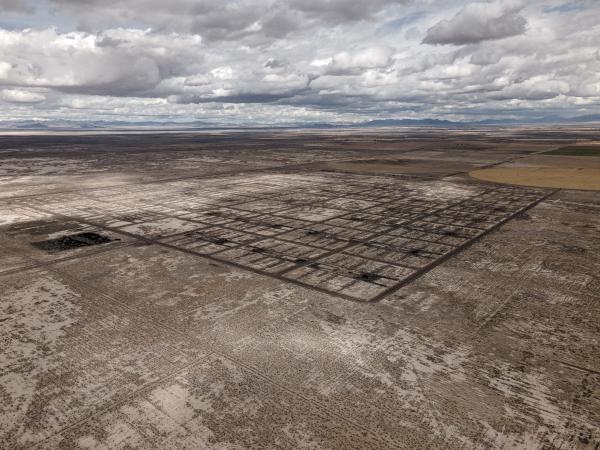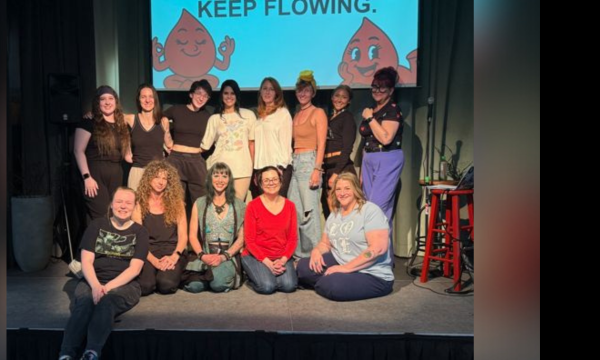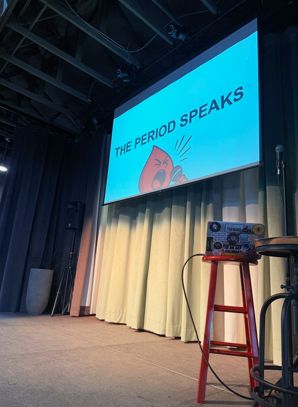This story is jointly published by nonprofits Amplify Utah and The Salt Lake Tribune to elevate diverse perspectives in local media through student journalism.
High above the barren landscape of Delta, Utah, a drone’s camera scans the footprint of the barracks that once held more than 10,000 Japanese Americans at the Topaz incarceration camp during World War II. One square mile, 42 blocks, 504 barracks—reduced to nothing more than the remnants of barbed wire and gridlines fused into the dirt.
Now, 80 years after the war’s end, students from the University of Utah have come together to produce a documentary film chronicling this chapter of Utah’s past in an effort to prevent repeating history, said Associate Professor Glen Feighery,
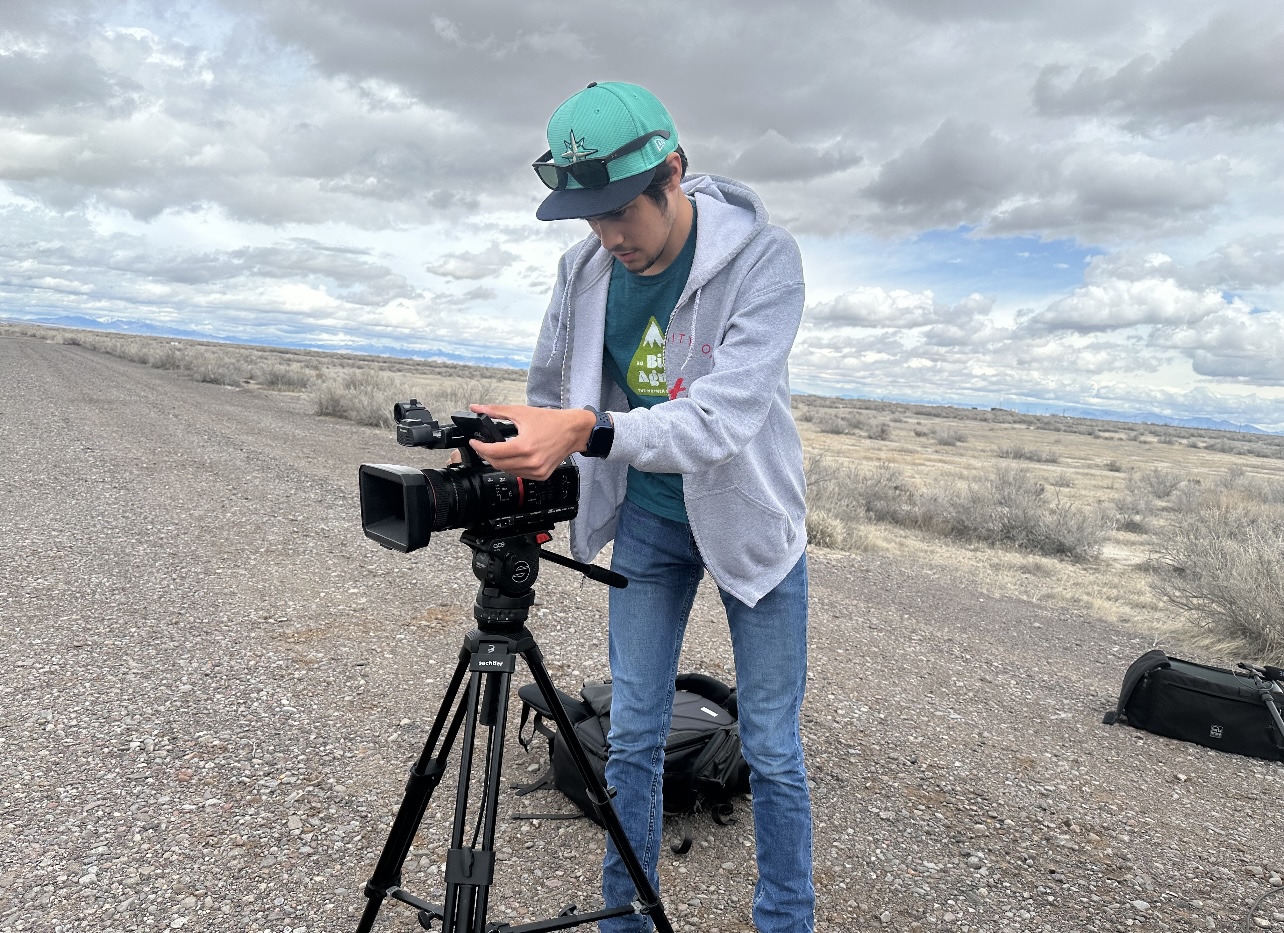
(Craig Wirth) Alex Hooper, a University of Utah production student, sets up a camera to film at the Topaz Internment Camp site near Delta, Utah, where some 10,000 Americans of Japanese heritage were incarcerated during World War II. Hooper is part of a class that is making a documentary about Topaz.
The student-led collaborative project, titled “Topaz: A War Within,” aims to preserve the memory of a silenced people and inspire viewers to reflect on the horrors of incarceration said Feighery, who is working alongside veteran documentarian Craig Wirth and 28 students on the film.
“We honor people when we can amplify their stories, so I’m hopeful that that’s going to be one of the takeaways,” Feighery said. “Narrative in any form is critical for that kind of knowledge, preservation and communication.”
The students broke into teams, one half focusing on research and interviews and the other on video production. Over a four-month period, they poured over hundreds of archival photographs, spent more than 40 hours gathering b-roll footage, and conducted interviews with descendants of incarcerees, a Salt Lake City Council member and a curator of Japanese art.
Liliana Anderson, a journalism student and co-writer for the film, said she wasn’t taught about the details of Japanese incarceration until taking this course.
“I never really knew about Topaz, which is crazy because I have lived in Utah my entire life,” she said. “I never even learned about it in school.”
Anderson said she saw the opportunity to tell this story as a huge undertaking that made her hesitant to join the class, but in the end she felt it was something that she could not pass up being a part of.
“It was scary at first, because the story is so big, but having this many people learn about such an important piece of history is really incredible,” she said.
Unearthing Hidden History
In the course’s first weeks, students faced the challenge of sourcing interview subjects, which proved difficult due to the time that has passed since WWII. Wirth, a long-time documentarian, characterized the project as “one of those 10 years too late documentaries,” emphasizing the arduous task of finding living sources.
“Now that doesn’t mean it shouldn’t be done, it just means it's going to be more difficult,” Wirth said. “The students have been entrepreneurial in that way.”
Their persistence attracted participation from Jeanette Misaka, a 94-year-old survivor of the Heart Mountain camp in Wyoming, other second and third generation Japanese Americans, and Salt Lake City Councilmember, Darin Mano.
Anderson said she discovered a source for the documentary through a fortuitous conversation with her mother’s friend, revealing a connection to Shauna Nakagama, a Japanese American who witnessed Topaz firsthand during World War II.
Executive Order 9066 authorized military commanders to enforce the relocation of Japanese Americans, primarily on the West Coast, due to fears of espionage and sabotage following Japan's attack on Pearl Harbor. Anderson explained that Nakagama’s family voluntarily moved to Utah before the order was issued, sparing them from incarceration—but not from the trauma of witnessing what occurred behind the barbed wire.
Anderson described the emotional intensity of interviewing Nakagama, who shed tears recalling her first visit to the Topaz camp.
“After I visited Topaz, I was knocked on my butt. It was like somebody just knocked me out,” Nakagama told Anderson. “There is nothing out there, and I was never the same.”
Students also researched the Friends of Topaz Museum in Delta and documented the 2024 pilgrimage to the site. The pilgrimage began with the opening of the University of Utah exhibit, “Pictures of Belonging,” at the Utah Museum of Fine Arts.
The collection, curated by Emily Lawhead, celebrates the work of three Japanese American artists: Hisako Hibi and Mine Okubo, who were incarcerated at Topaz, and Miki Hayakawa.
“It [is] so important to Utah history that we don’t brush this under the rug,” Lawhead said. “The key to that is telling these stories, and if an approachable way to do that is through art, then I think that that is a great tool.”
The students incorporated art from the exhibit and photos of the public’s reaction into the documentary as visual aid, alongside archival photography and videography that provided context for the interviews.
Capturing What Remains
Jack Hollis, a student and co-producer, joined the project after completing a documentary about Little Cottonwood Canyon in the fall of 2024. When Wirth proposed one final documentary before his retirement with Topaz as the subject, Hollis said he eagerly joined. He said he was excited to work on a new film and saw it as a powerful medium for historical storytelling.
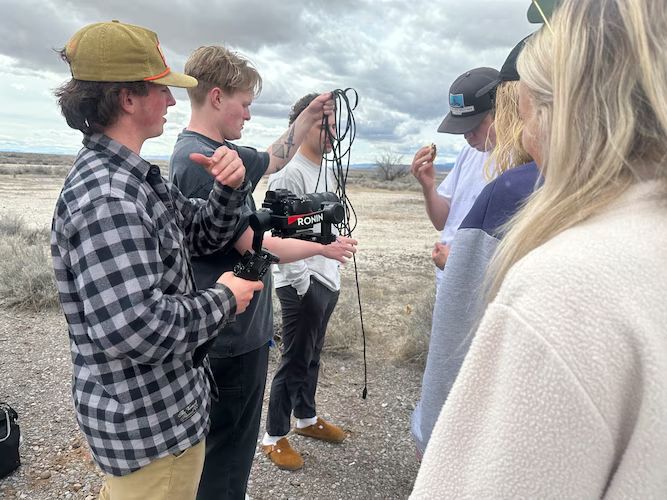
(Craig Wirth) University of Utah documentary production students prepare a camera to get footage at the Topaz Internment Camp site near Delta, Utah, where some 10,000 Americans of Japanese heritage were incarcerated during World War II.
“When I read, it doesn't have the same impact as when I see it,” he said. “It's almost like you're sitting in the room with them, listening to them tell you a story. It can be a lot more powerful than writing.”
On March 22, Hollis and other production students traveled to Topaz, guided by Topaz Museum President Jane Beckwith. With just one day to film, they worked efficiently with ground cameras and drones, Hollis said.
Hollis said filming at the former camp site offered a unique, creative challenge. The vastness of the field provided little visual inspiration, demanding imagination and careful attention.
“It was just kind of a film as you go, figure out what you need as you go,” he said. “We had to get everything then, so we had to be very diligent and specific and not pass up any shot opportunities.”
Hollis said he felt like he was standing in a graveyard. Cement slabs, rusted nails and barbed wire circling wooden pegs served as the only remaining evidence of the barracks that once housed thousands of people.
“I'm a big World War II buff, so getting to kind of see a piece of history, a pretty big scar on America's past, was interesting in its own right, but it was also very sad,” Hollis said.
The production team worked to capture meaningful footage of a location that appeared to be little more than an empty field stretching for miles. They focused on revealing the historical details hidden in plain sight.
After four hours of filming, the team collected over 100 photo and video assets.
Building a Legacy Through Film
The subsequent editing process involved carefully assembling interview segments with visual materials. Enhanced by thoughtfully selected music, said Wirth, the documentary evolved into a vehicle for commemorating lives forever altered by Topaz.
Misaka, one of the few remaining incarceration survivors, said she’s grateful to the students for their efforts to recognize and amplify her community’s history.
“People forget their history,” she added, “and when you forget your history, you repeat it.”
Anderson believes that as a student who took part in this project, she is taking a significant step toward educating Utahns about a painful chapter in their state's history.
“It is crazy that a film of this magnitude is being produced by students,” Anderson said. “It is mindblowing.”
The class will continue editing through the summer, aiming to release the documentary on YouTube by August 2025. The hope is that it will be a source of awareness for what happened at Topaz and create space for historical remembrance.
“The mark of success is: did you make anyone who watches it reinforce or change their opinion, or get them talking?” Wirth said. “That’s a good documentary.”
Jordan Thornblad wrote this story as a journalism student at the University of Utah. It is published as part of a collaborative including nonprofits Amplify Utah and The Salt Lake Tribune.







